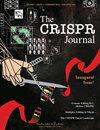基因编辑纠正GM1神经节脂质病患者G > a GLB1的体外转化
IF 3.7
4区 生物学
Q2 GENETICS & HEREDITY
引用次数: 1
摘要
神经节脂苷-单唾液酸(GM1)神经节脂病是一种罕见的常染色体隐性遗传病,通常由GLB1基因的有害单核苷酸变异(snv)引起。这些变异导致β-半乳糖苷酶(β-gal)活性降低,导致与过早死亡相关的神经变性。目前,尚无有效的治疗GM1神经节脂质病的方法。三个正在进行的临床试验旨在提供GLB1基因的功能副本,以阻止疾病进展。在这项研究中,我们发现41%的GLB1致病性snv可以被腺嘌呤碱基编辑器(ABEs)取代。我们的研究结果表明,ABE有效地纠正了患者来源的成纤维细胞中的致病等位基因,恢复了治疗水平的β-gal活性。脱靶DNA分析没有检测到治疗患者细胞中的脱靶编辑活性,除了基于3D结构生物信息学预测的对β-gal活性没有影响的旁观者编辑。总之,我们的研究结果表明,基因编辑可能是治疗GM1神经节脂质病的另一种策略。本文章由计算机程序翻译,如有差异,请以英文原文为准。
Gene Editing Corrects In Vitro a G > A GLB1 Transition from a GM1 Gangliosidosis Patient.
Ganglioside-monosialic acid (GM1) gangliosidosis, a rare autosomal recessive disorder, is frequently caused by deleterious single nucleotide variants (SNVs) in GLB1 gene. These variants result in reduced β-galactosidase (β-gal) activity, leading to neurodegeneration associated with premature death. Currently, no effective therapy for GM1 gangliosidosis is available. Three ongoing clinical trials aim to deliver a functional copy of the GLB1 gene to stop disease progression. In this study, we show that 41% of GLB1 pathogenic SNVs can be replaced by adenine base editors (ABEs). Our results demonstrate that ABE efficiently corrects the pathogenic allele in patient-derived fibroblasts, restoring therapeutic levels of β-gal activity. Off-target DNA analysis did not detect off-target editing activity in treated patient's cells, except a bystander edit without consequences on β-gal activity based on 3D structure bioinformatics predictions. Altogether, our results suggest that gene editing might be an alternative strategy to cure GM1 gangliosidosis.
求助全文
通过发布文献求助,成功后即可免费获取论文全文。
去求助
来源期刊

CRISPR Journal
Biochemistry, Genetics and Molecular Biology-Biotechnology
CiteScore
6.30
自引率
2.70%
发文量
76
期刊介绍:
In recognition of this extraordinary scientific and technological era, Mary Ann Liebert, Inc., publishers recently announced the creation of The CRISPR Journal -- an international, multidisciplinary peer-reviewed journal publishing outstanding research on the myriad applications and underlying technology of CRISPR.
Debuting in 2018, The CRISPR Journal will be published online and in print with flexible open access options, providing a high-profile venue for groundbreaking research, as well as lively and provocative commentary, analysis, and debate. The CRISPR Journal adds an exciting and dynamic component to the Mary Ann Liebert, Inc. portfolio, which includes GEN (Genetic Engineering & Biotechnology News) and more than 80 leading peer-reviewed journals.
 求助内容:
求助内容: 应助结果提醒方式:
应助结果提醒方式:


